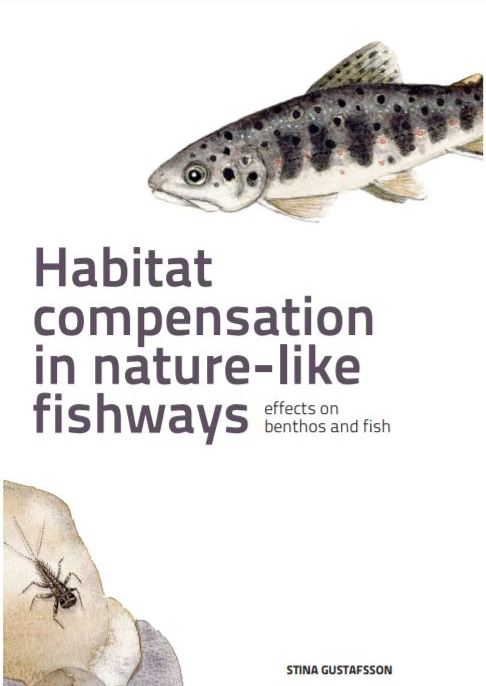PhD-defense and seminar: River restoration and nature-like fishways
Posted by Daniel Nyqvist | Projekt EldbäckenOn Friday, 15 December, from 13:00, Stina Gustafsson will defend her PhD-thesis “Habitat compensation in nature-like fishways – effects on benthos and fish”. Paul Giller (Cork University, Ireland) will be the opponent, and Frauke Ecke (SLU, Sweden), Brendan McKie (SLU, Sweden) and Jouni Taskinen (University of Juväskylä, Finland) constitute the grading committee. The defense will take place in 1B306 (Fryxellsalen) at Karlstad University. Everyone is welcome to attend!

In the abstract to the thesis, Stina Gustafsson writes: “The construction of nature-like fishways has become an increasingly common measure to restore longitudinal connectivity in streams and rivers affected by hydroelectric development. These fishways also have the potential to function as habitat compensation measures when running waters have been degraded or lost. The habitat potential has however often been overlooked, and therefore the aim of this thesis was to examine the potential of nature-like fishways for habitat compensation, with special focus on the effect of added habitat heterogeneity.
This thesis examines the effects of habitat diversity on the macroinvertebrate family composition and functional organization in a nature-like, biocanal-type fishway. The biocanal contained four habitat types; riffle, pool, braided channel and floodplain. The effects of habitat diversity and large woody debris on brown trout habitat choice was also investigated in the biocanal. In addition, and prior to introduction of the threatened freshwater pearl mussel into the biocanal, the suitability of different brown trout strains as hosts for the mussel was examined.
The results show that the habitat heterogeneity in the biocanal contributed to an increased macroinvertebrate family diversity. The functional organization of the macroinvertebrate community suggests that it was a heterotrophic system and more functionally similar to the main river than to the small streams that it was created to resemble. Brown trout habitat choice studies showed that high densities of large woody debris increase the probability of fish remaining at the site of release. Testing of different brown trout strains as host for the freshwater pearl mussel revealed that both wild and hatchery-reared brown trout strains were suitable hosts. In summary, the results indicate that it is possible to create a fish passage with added value through its high habitat function and that nature-like fishways can be designed to reach multiple species restoration goals.”
The thesis is available online here.
On Thursday, 14 December 14:00, Brendan McKie, one of the members of the grading committee, will give a presentation titled: “River restoration and biodiversity and ecosystem functioning in tributaries of the Vindel River: The importance of restoration intensity and time”. The seminar will be given in room 5F416, at Karlstad University. Everyone is welcome to attend also the seminar.


